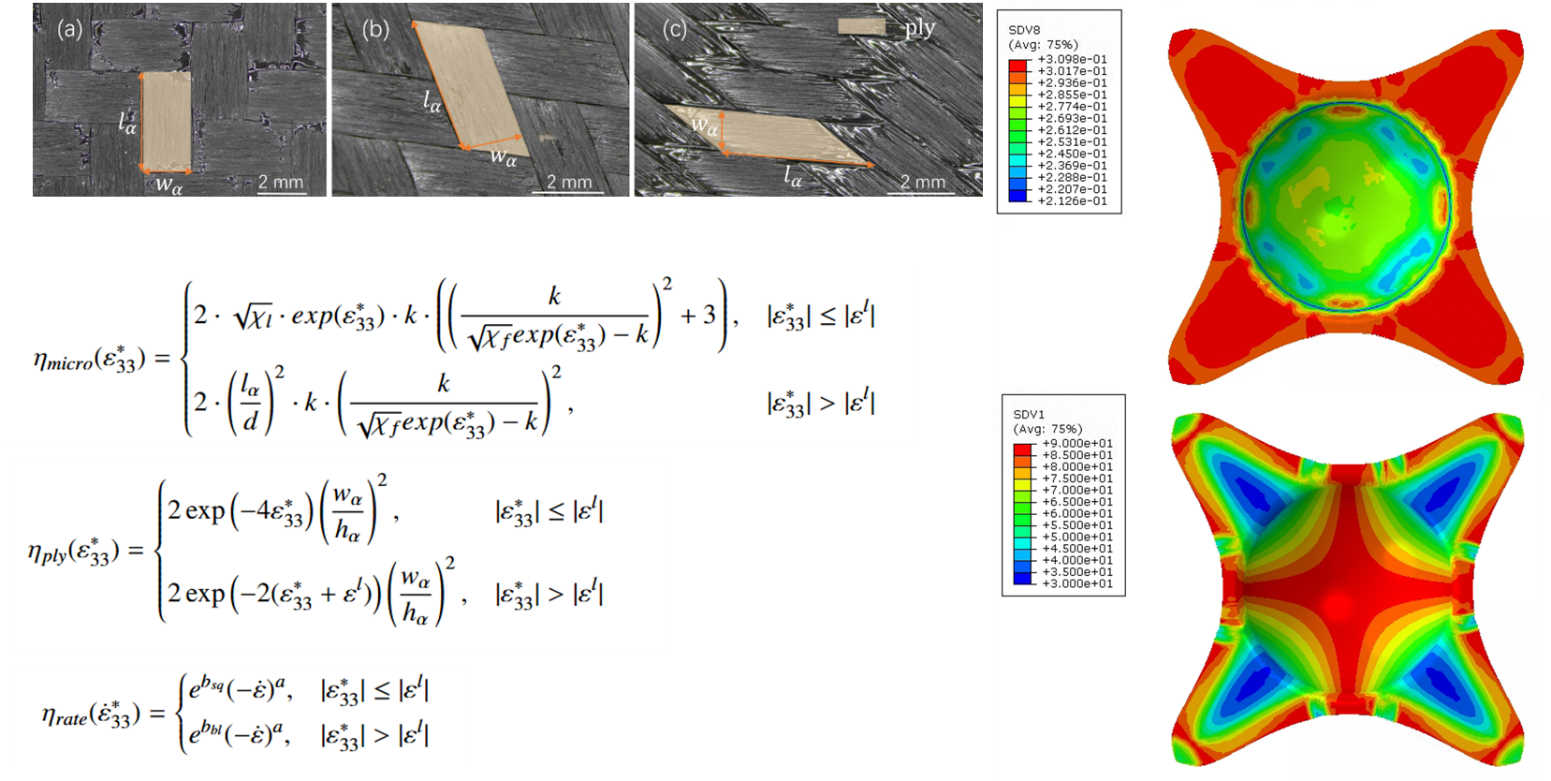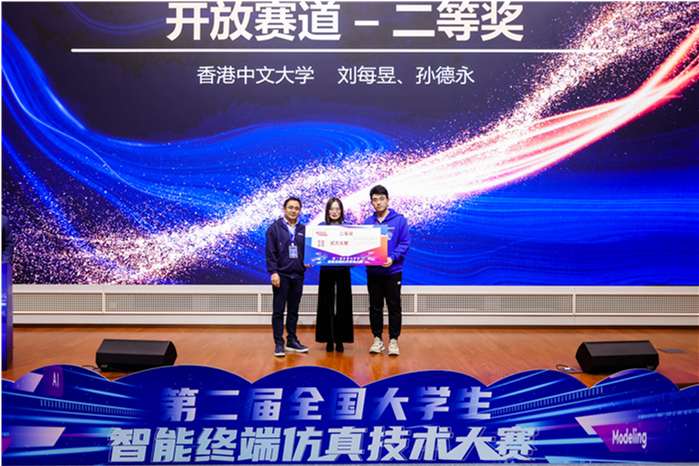Congratulations to Miss Meiyu Liu and Mr. Deyong Sun, PhD students of Professor Weizhao Zhang, for being awarded the Second Class Award at the 2nd National College Students Intelligent Terminal Simulation Technology Competition (第二屆全國大學生智能終端仿真技術大賽)!
Organized by the China Simulation Federation (中國仿真學會), this national competition had over 70 participating teams, resulting in only three First Class Awards and six Second Class Awards.
Project Title:
Multi-scale modeling of three-dimensional nonlinear and non-orthogonal hyper-viscoelastic constitutive models for composites
Project Description:
In order to accurately explain the molding mechanism and predict the material parameters and performance of the molded parts, this work builds a three-dimensional, nonlinear, and non-orthogonal constitutive model that begins with the composite material compression molding process. This model achieves a detailed description of the deformation mode and its coupling effect during the CFRP prepreg molding process. The multi-scale composite material nonlinear and non-orthogonal hyper-viscoelastic constitutive model is mainly developed and expanded in this study, with particular attention to the following three points:
1) Integrated three-dimensional nonlinear, non-orthogonal hyper-viscoelastic constitutive model.
This section formulates a coupled three-dimensional nonlinear, non-orthogonal, hyper-viscoelastic constitutive model to comprehensively characterize the diverse deformation modes in the forming process of CFRP composite materials, including in-plane tension, shear, bending, and out-of-plane compression, shear, and bending deformations, as well as the underlying forming mechanism.

Predictions of power-series hyperviscoelastic model based on squeezing flow theory
2) A new three-dimensional constitutive model based on strain gradient theory.
This part develops a new three-dimensional constitutive model based on strain gradient theory to solve the size effect in material bending deformation, which is difficult to capture in the previous model. Finally, the tensile, compressive, bending, and shear deformation modes of CFRP prepreg multi-scale molding and their coupling effects can be described in a unified model framework.

Zig-zag mesh and pseudo-wrinkle phenomena at mesoscopic scale
3) Coupled constitutive law of composite.
This section developed a constitutive model that couples the chemical, thermal, and rheological properties of the composite during the curing process. This model accurately predicts the residual stress and deformation of CFRP at any stage and under any curing conditions, thereby reducing the investment in repeated characterization experiments.

The comparison between predicted and experimental deformations of L-shaped CFRP laminates

Miss Meiyu Liu and Mr. Deyong Sun were awarded the Second Class Award at the competition.